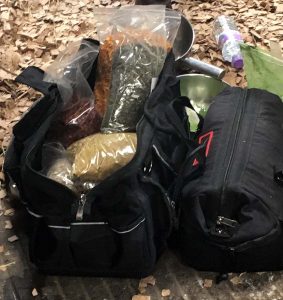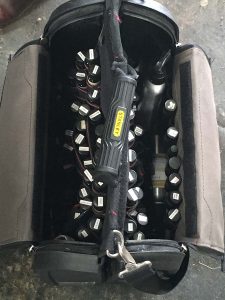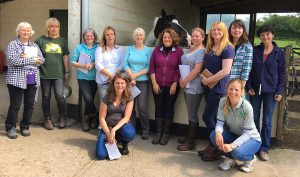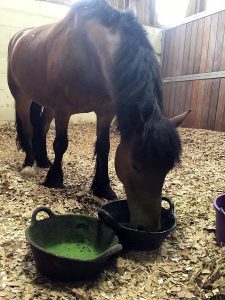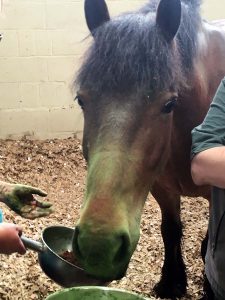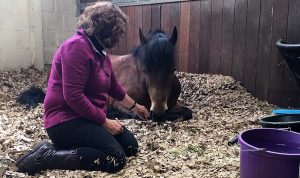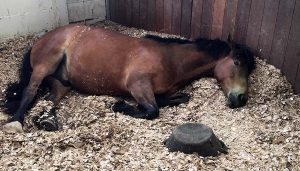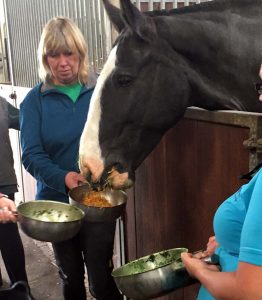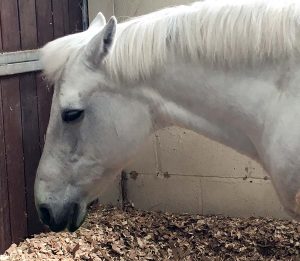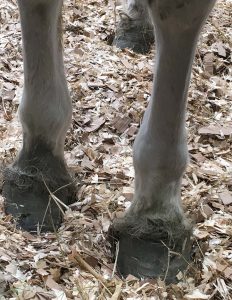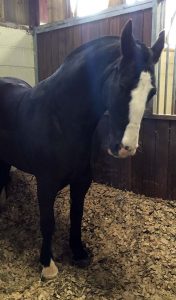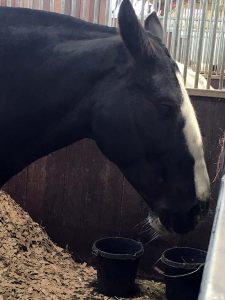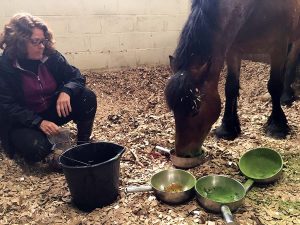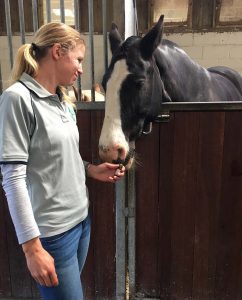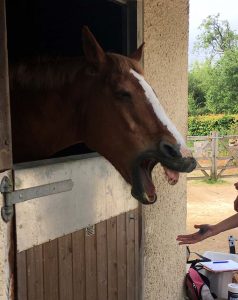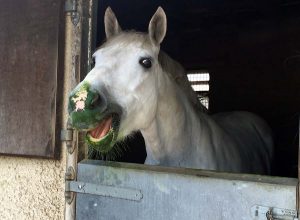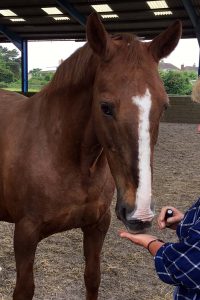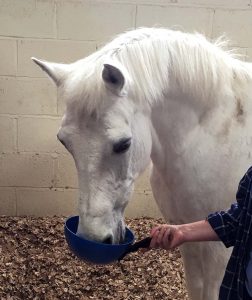I am so grateful that on the weekend of 4 -5 June 2016, I finally met an amazing teacher who I first heard about and was inspired to meet five years ago. My experience with one of my horses all those years ago planted a seed and a curiosity that never left me.
As life does, other things got in the way and the seed remained dormant until I made a conscious decision last year to follow my curiosity. I’m still learning to truly listen and follow my intuition but something inside me told me that I really should fly to the other side of the world and meet Caroline Ingraham. And I am so glad I did! It is very difficult to truly encapsulate Caroline’s work and passion and the depth of its application and possibilities in writing but this is my attempt to describe what I have learnt so far about applied zoopharmacognosy (“AZ”).
Before I delve into the details of what I have learnt and experienced, here is some background about Caroline and how AZ was born. For more detailed information, including FAQs about AZ you can visit Caroline’s website.
What is AZ?
“The word Zoopharmacognosy is derived from the ancient greek ‘zoo’ (animal), ‘pharmaco’ (remedy) and ‘gnosy’ (knowing). Animals have evolved to cope with potential threats including disease and injury, and as a result have developed solutions to restore health by self-administering medicinal compounds naturally found in the wild. “Applied Zoopharmacognosy” is the application of this knowledge for animals who do not have access to an environment rich in their natural resources.” Zoopharmacognosy is an innate ability (ie. the animal is born with it) and not a learnt behaviour. As this ability is deeply linked to an animal’s survival instinct it has not been lost in domesticated animals. This can be seen when newborn domestic animals select as effectively as wild animals.
“Caroline always had an enormous concern for the ethical treatment of animals and their welfare and she has dedicated the last three decades of her life researching and observing how animals heal themselves. Caroline’s work encompasses an understanding of pharmacokinetics and pharmacology combined with animal self-medication.”
“AZ enables self-medicative behaviour in domesticated or captive animals by offering plant extracts that would contain the same, or similar constituents to those found in an animal’s natural environment. The practice encourages and allows an animal to guide its own health, since unlike their wild counterparts, captive and domesticated animals rarely have the opportunity to forage on medicinal plants. The extracts offered include a variety of essential oils, absolutes, plant extracts, macerated oils, tubers, clays, algae, seaweeds and minerals.”
“Caroline has helped thousands of domestic animals and she has also had great success with orphaned elephant calves at the Sheldrick Trust in Kenya, working with the French government and bio-dynamic farmers, as well as in conservation with endangered species.”
For a more detailed background about AZ visit Caroline’s website and check out this recent interview with Caroline by Dr. Karen Becker, a proactive and integrative wellness veterinarian
And this article: Empowering Pets to Heal Themselves Through Self-Medication
What could Sniffing a Bunch of Oils Possibly Contribute to an Animal’s Health?
This is a question I asked myself five years ago when my horse was treated using AZ by one of Caroline’s former students. Other questions I asked myself included – of course animals are going to eat the herbs that are offered, not because they ‘need’ them for health but because they probably taste a lot like hay and my horses eat everything! And the other products are probably sniffed and consumed out of curiosity. Again, my horses eat most things I put in front of them. (See Caroline’s FAQs to answer these questions).
So to sum it up, I was rather dubious about AZ but nonetheless I was curious enough to give it a try as I had a horse who suffered severe headshaking and all the usual allopathic medical treatments and interventions had failed to provide any relief. In an attempt to help my horse I started him on a natural diet which included several herbs (with the guidance of an Equine Herbalist) and his headshaking started to improve however it was still significant. My Herbalist suggested that I give AZ a try. My horse received two AZ sessions about one week apart and within a few days following the second session to my utter amazement the headshaking completely stopped and it never returned. My rational brain was inclined to put it down to purely coincidence but I did retain an element of surprise and intrigue.
While the resolution of my horse’s headshaking was impressive it is not the sole reason that got me so interested in AZ. Following my horse’s session I noticed a huge change in his behaviour, in particular a reduction in his anxiety and fear responses. He came to me as a very emotional horse who was fearful of people and not very confident and while we were slowly working through these issues, it was not easy and I struggled to help him become more confident and less reactive. During the AZ session my horse selected a lot of remedies that related to emotions and past trauma. At the time I had no idea what that meant or what the effect would be but seeing the changes in him in the weeks following the sessions I was blown away.
I had to learn more about how on earth smelling some oils and chewing on some herbs could have such a profound and lasting effect on the emotional state of a horse and help resolve a medical condition that can be incredibly difficult to treat!
Working with Caroline
During the two day equine workshop, Caroline guided 11 enthusiastic horse owners and horse health practitioners into the fascinating world of AZ. Many participants had seen Caroline work with their animals and wanted to learn more so that they could use some of the principles and learnings to help their own animals.
We spent the morning learning about the principles and background of AZ, important pharmacological considerations and the importance of learning to listen to subtle behavioural clues from the horses that we would be working with in the afternoon so that we could recognise and understand self-medicative behaviour.
Caroline explained that in 30 years of practice she has learnt not to doubt an animal when it is selecting remedies, provided the remedy is offered on its own and not when mixed with food. An exception is when an animal is starving. This is also commonly the reason when animals eat poisonous plants that they would normally avoid if sufficient food was available. In relation to Essential Oils, these offer no metabolic value to animals whatsoever and are selected by the animals very specifically and deliberately.
Do the Remedies Simply Taste Good?
During the practical sessions of the workshop and during several private consultations that I attended with Caroline many horses selected Barley Grass powder, Wheat Grass powder and Rose Hip Shells. These are offered at the beginning of an AZ session to provide minerals and vitamins and these ‘strengthen the animal’s core’ as Caroline puts it.
Now these look kind of yummy and smell fresh and delicious and I imagined most horses who are not extremely fussy would eat these regardless of whether they ‘need them’. Or so I thought. Most of the horses selected varying amounts of these remedies but it was amazing to note how specific they were as to whether they preferred the Barley or the Wheat Grass and after a certain amount (which was different for each horse) they lost interest and would not consume any more even if it was re-offered an hour or so later.
When we worked with the same horses again on the second day some of them showed absolutely no interest in the Barley Grass, Wheat Grass or Rose Hip Shells again but instead were very interested in the stronger Essential Oils that they did not select the day before. Caroline explained that this was a very common pattern and that once horses had selected remedies to strengthen their core (and replace important vitamins and minerals that their bodies may have been lacking) they are then able to work with strong remedies that affect different organ systems.
While observing the practical demonstration and listening to Caroline during the lectures I began to understand, at least in part, why my horse had such positive emotional shifts after his AZ sessions. After working with hundreds of horses (and also other animals), Caroline strongly believes that many anxiety issues and behaviours in animals are caused by or significantly contributed to by underlying physical (often subclinical – ie. not directly obvious) problems.
When an animal does not feel 100{afeaa658db471c486703db02b64b80574e638ce171bab3c9b899bf9ae485c151} strong and healthy it feels vulnerable and when a flight animal feels vulnerable it is at increased risk of predators and this induces a state of anxiety and stress. Caroline has seen countless horses transform from being anxious to becoming increasingly relaxed and confident simply by selecting remedies relating to physical health without significant selection of ‘behavioural remedies’. This makes perfect sense to me and is something I am very curious to explore further.
Correlation to Medical Conditions
By observing the horses’ behaviour carefully and listening to Caroline explain the constituents and modes of actions of the remedies that the horses were selecting I could clearly see patterns emerging and the part of my brain that loves problem solving and dissecting complex medical conditions did a somersault!
I was intrigued. Some of the horses we worked with had long standing medical issues and were under veterinary care and the remedies they selected and also the way they were selected strongly correlated to their body systems or diseases from which the horses suffered. These included gastric ulcers, laminitis, Equine Metabolic Syndrome (EMS), Cushing’s Disease and osteoarthritis. It was fascinating to watch what the horses selected, Caroline’s explanation of the constituents of the remedies and then in my own mind correlating this to the pathophysiology of the disease from which each horse was suffering.
While I noted these correlations, it is very important in AZ to keep an open mind and not begin assuming that an animal will select certain remedies just because they are known to be commonly selected by animals with specific conditions. Making assumptions may mean missing important cues that the animal gives meaning other important remedies for that animal are missed.
It is also important to appreciate that AZ is not intended to replace veterinary care or to be used to diagnose medical conditions. AZ can provide information and amazing benefits but it is not ok to let an animal suffer when it requires veterinary attention. AZ is a fantastic complement to traditional veterinary care.
The deep relaxation of the horses following each AZ session, the change in their eyes, stretching, reduced tension in their bodies and changes in behaviour ranging from restlessness, nervousness and moderate aggression to calm and relaxed demeanour was equally fascinating to observe.
This is a comment from the owner of one of the horses we worked with following the AZ session:
“Mac loved the barley and wheat grass and the rose hips even though he has been on rose hips for quite a while but his all time favourite oil not surprisingly brought the biggest change. He thoroughly enjoyed being surrounded by people who watched as Caroline weaved her magic in his stable and he opened up more and more. There were many peaceful, glorious, outstanding moments; too many to commit to simple words.
When Maisie rode Mac around the pastures yesterday Shelley said he flowed with an ease and flexibility we have seen hints of but wasn’t something that Mac could effortlessly maintain. After this weekend we not only have more tools to help him along with confirmation that we are on the right track, we have a pony who is even more radiant than he was before.
I don’t believe it is possible for any one person to have all the knowledge necessary to truly support the animals that give so much and actually ask for so little in return. That’s why I enjoy being a part of the process and working as a team.
Thank you Caroline for giving more brilliant, peaceful and rewarding experiences to the vibrant, shining, happy pony that is Mac. I can’t wait to see what this lovely little horse shares next.”
Giving Animals a Voice
I have always been passionate about animal welfare and I believe that a key component to ensuring that an animal has a healthy and happy life is giving the animal the opportunity to communicate, that is, to be heard and LISTENED to. The way to show an animal that it is being listened to is by acting on and RESPECTING what the animal is communicating.
This is a key principle that I practise with my horses and what I strive towards in my horsemanship journey. It has nothing to do with dominance or training methods, it is simply about creating dialogue that can be understood between two beings of different species. People assume and impose so much when it comes to interacting with horses, horses are seldom listened to when they express themselves. It often takes for a horse to exhibit extremely strong behaviours such as aggression, biting, bucking, etc before a human takes notice or the horse shuts down completely mentally and enters a state of ‘learned helplessness’. These horses are easy to spot by the deadness in their eyes and the lack of life and enthusiasm in their bodies. Horses make many attempts to communicate before they resign themselves to this state but sadly few people have learnt the art of truly listening to horses.
What I realised while observing Caroline working with the horses was the amazing communication channel that opened between human and horse. While some horses were very friendly and confident from the start, some of the horses were reluctant to express themselves and you could see that they were unsure what to expect and were suspicious about what would be ‘done to them’ when they started smelling the remedies. Over the course of one to two hours of Caroline and her students working with each horse it was like watching an awkward first date transform into a conversation between old trusting friends.
Once the horses realised that their choices were respected, that remedies were taken away if the horse did not select them, that nothing was applied to their bodies unless they clearly asked for it was like watching a light switch come on that had long been dimmed deep inside. Taking away a remedy that was not selected by a horse created a profound change in confidence in that horse. Again, it is difficulty to clearly describe in words the significance of what took place but I believe that giving the horses a choice about what to choose for their own bodies and RESPECTING their choice unequivocally had an enormous impact on the emotional state of each horse.
Future Research
While the action and effect on the body of herbs and plant extracts can be relatively easily explained from a biochemical and pharmacological perspective, it is the powerful effect of essential oils that has me truly intrigued.
There is an increasing amount of research emerging into the use of plant medicine, including essential oils in the medical profession. See or example this article: Effect of Essential Oils on Pathogenic Bacteria
Essential Oils work on a molecular level (biochemical), they influence cellular communication and are also said to work on electromagnetic frequency (energy). I think we are only just beginning to understand the energetic properties and effects of medicinal plants, especially in the form of Essential Oils and this is an area that I’m keen to learn more about.
Caroline is continuing her research and experience with AZ and she is on a mission to bring this important information into the veterinary profession.
Conclusion
I have refrained from specifically discussing individual cases and the remedies that horses selected in the case studies that I observed. While AZ might sound like a relatively simple process, it is in fact an incredibly complex skill. There are close to 100 different remedies that Caroline works with and it is completely individualised to each case. While there are patterns and themes and common remedies that are frequently selected by most horses, it requires significant experience and very keen observational skills to truly become proficient at AZ.
Having said that, it is easy to get started using AZ with some of the common remedies and this is why Caroline teaches people about the basics during her workshops and in her books. And very exciting for vets, Caroline is in the process of putting together a comprehensive training course for vets around the world in 2017! I’m already signed up!!
While I could go on for many more pages about all the amazing things I have learnt about AZ, I will conclude this post with a quote taken from Caroline’s website which sums up this wonderful modality in a beautiful way:
“The symbol of the Zebra will soon be used to represent the work of Caroline Ingraham, so when you see the stripes it will remind you of the individual characteristics of Applied Zoopharmacognosy. The patterns of the Zebra are unique from zebra to zebra, similar to our fingerprints.
The shamanic meaning of the Zebra:
Zebras blend into their herd without losing individuality. Their stripes represent the blending and balancing of opposites, yin and yang. Zebras symbolize the understanding that challenge is a chance for growth with vision to a deeper truth. The energy of light and dark shifts realities and expands consciousness, helping us see past our preconceived beliefs, and leads us into the unseen. Zebras represent confidence in the middle of opposing forces.”
Quotations in this blog have been gratefully copied from Ingraham Applied Zoopharmacognosy with more information available here.



